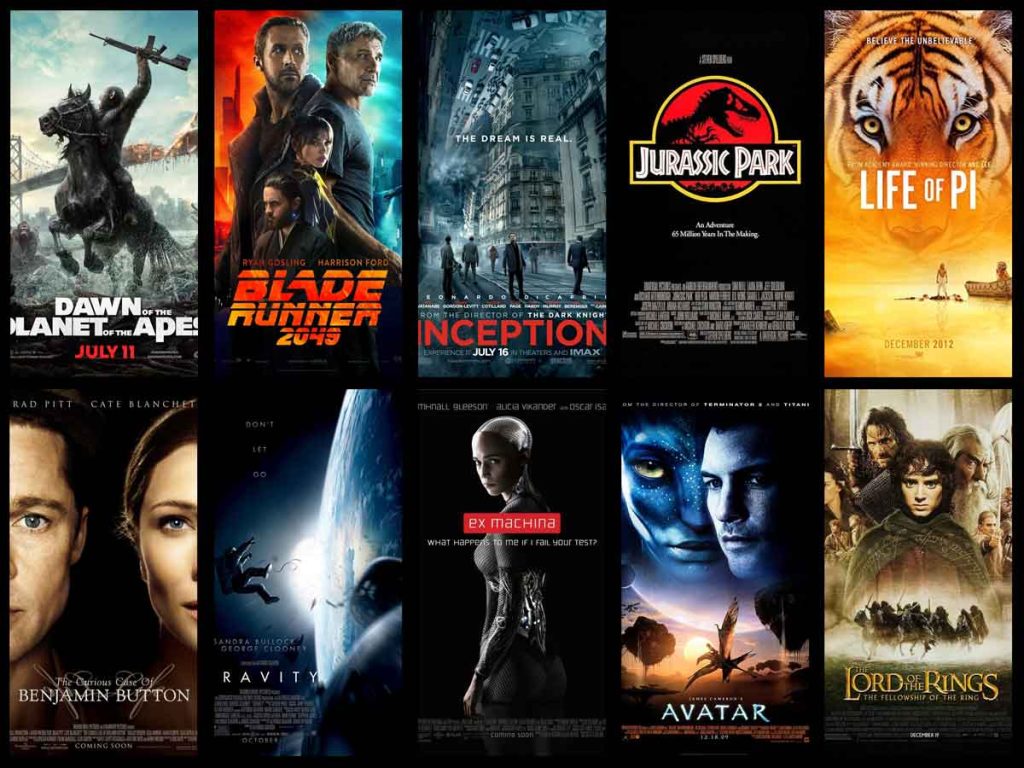
The concept of the “male gaze” comes from Laura Mulvey’s 1975 article “Visual Pleasure and Narrative Cinema” and essentially implies that films are made through the lens of a male; therefore, women are characters treated as accessories to the enjoyment of the (expectedly male) audience. This is true for narrative progression and the framing of bodies—shot with more of a concern for aesthetically pleasing images than the reality of strong women as characters.
Much of today’s average mainstream film complicates the male gaze and an antiquated cinematic gender hierarchy, for instance, Jumanji: Welcome to the Jungle (2017), critiques women for how they are seen. This film contains male gaze elements, especially relative to Bethany. She’s self-involved about her looks but when she gets sucked into the game, she’s made into a warrior with a short skirt (Karen Gillan). This is the hyperbolised female form, while the men comment about it, she does not comment on how she looks.
The articles and the world (Durham) with focus on The Wolf of Wall Street (2013), this idea of the female gaze only becomes more problematic in turn. These women are only existing in the fantasy as dreams and achievements for men—booty and bragging rights. Such ideas spread like a virus across all cultures, for as Durham (2005) studies, the coverage promotes such low-worthy expectations since women become sidelined in more significant stories constructed by and for men.
The Suicide Squad (2021): with Harley Quinn (Margot Robbie), the male gaze is a bit more complicated. Yes, she’s an emancipated, strong, and powerful—but she’s also in a hyper-sexualized costume and does actions that appeal to the male viewing sensibilities. Thus, she’s debated as even being empowered in the first place. Clare Chambers (2008) notes the blurred lines of such empowered imagery that suggest that no matter what the filmmakers attempt to do to bust the boundaries, they are still bound by the male gaze.
Transformers (franchise): The franchise responsible for special effects and incredible, over-the-top battle scenes. It’s also known for hypersexualizing its female characters. The female robots are formed with curvy, feminine bodies, long hair, and an even more feminized formation to sexualize them as AEs. The humans are in the film only to be looked at, and when they’re AI (AEs), they receive the same treatment of hypersexualization about their form as opposed to their specific skills. As noted by Allard (2021), this sexualized version of reality contributes to identity politics because some women are merely sexualized women—even when the plot has nothing to do with sexualization.

But it appears we’ve taken some steps forward, like Wonder Woman (2017) and Captain Marvel (2019); these films have a powerful female protagonist and storylines that do not center around what females would get a benefit from appealing to males. However, the female gaze is still questioned. The definition and consequences of such a conception are still debated (Loreck 2016). But these films give women a narrative that, hopefully, one day, could be translated to real life.
Reference
Allard, B. (2020). The Male Gaze. [online] The Franklin Post. Available at: https://fhspost.com/4218/arts-entertainment/the-male-gaze/.
Chambers, C. (2010). Sex, Culture, and Justice. Penn State Press.
Meenakshi Gigi Durham and Kellner, D. (2006). Media and cultural studies. Oxford: Blackwell Publishing, pp.18–40.
Loreck, J. (2016). Explainer: what does the ‘male gaze’ mean, and what about a female gaze? [online] The Conversation. Available at: https://theconversation.com/explainer-what-does-the-male-gaze-mean-and-what-about-a-female-gaze-52486.
Mulvey, L. (1975). Visual Pleasure and Narrative Cinema. London Afterall Books.
Ross, K. (2010). Gendered media : women, men, and identity politics. Lanham: Rowman & Littlefield Publishers.


This blog offers a thoughtful analysis of how visual media tends to focus more on looks than on true representation of women, reflecting Laura Mulvey’s key concepts about the male gaze. I like how it explores both the story and technical elements, like framing and costumes, that contribute to objectification.